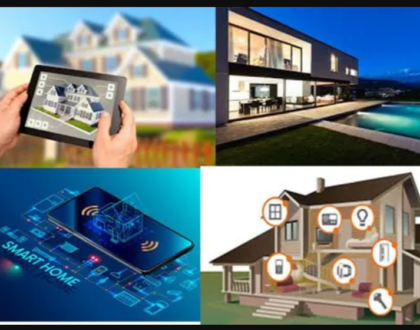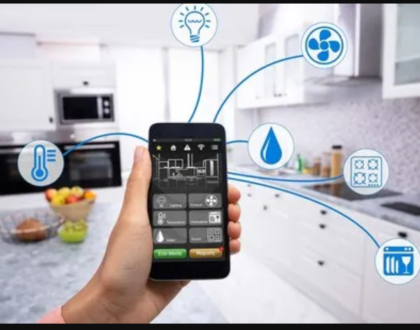What is Home Automation?

Building automation, in the form of a smart house, simplifies your life by automating tasks such as air conditioning, lighting, ventilation, and security. Additionally, you have the ability to manage household appliances like refrigerators, washers, or ovens. Wi-Fi facilitates remote monitoring and control. In today’s context, home devices have become integral and indispensable aspects of our daily lives.
Home automation refers to the use of technology to control and automate various household tasks and functions, enhancing the overall efficiency, convenience, and security of a home. The goal of home automation is to create a smart home environment where different devices and systems can communicate with each other to perform tasks automatically or be controlled remotely by the homeowner. This involves the integration of smart devices, sensors, and technologies to create a connected ecosystem within the home. Pioneering Smart Living: Explore the Essence of Home Automation with Cognito Solutions, Your Trusted Home Automation Company in Pune.
Key components of home automation include:
Smart Devices: These are devices equipped with sensors, actuators, and communication modules that allow them to connect to a network. Examples include smart thermostats, lighting systems, door locks, cameras, and appliances.
Centralized Control: Home automation systems often have a central hub or controller that serves as the brain of the smart home. This hub enables users to manage and control various connected devices through a single interface, such as a smartphone app or a voice-activated assistant.
Automation Protocols: Different communication protocols, such as Wi-Fi, Zigbee, Z-Wave, and Bluetooth, facilitate communication between smart devices. These protocols enable devices from different manufacturers to work together seamlessly in a unified home automation system.
Sensors and Detectors: Sensors play a crucial role in home automation by detecting changes in the environment and triggering automated actions. Examples include motion sensors, door/window sensors, temperature sensors, and smoke detectors.
Voice Control: Many home automation systems incorporate voice-activated assistants like Amazon Alexa, Google Assistant, or Apple’s Siri. This allows users to control smart devices and issue commands through voice prompts.
Energy Management: Home automation can contribute to energy efficiency by allowing users to monitor and control their energy consumption. Smart thermostats, for example, can optimize heating and cooling based on occupancy and preferences, leading to energy savings.
Security and Surveillance: Home automation enhances home security through features like smart locks, doorbell cameras, and security systems. Users can receive real-time alerts and remotely monitor their home, improving overall safety.
Remote Access: With the help of internet connectivity, users can remotely control and monitor their smart home devices from anywhere with a smartphone or a computer. This flexibility allows homeowners to manage their homes even when they are away.
Home automation offers numerous benefits, including increased convenience, energy savings, improved security, and the ability to create a more personalized and responsive living environment. As technology continues to advance, the scope and capabilities of home automation systems are likely to expand, providing homeowners with even more opportunities to customize and enhance their living spaces. Unlocking the Future: Home Automation Redefined by Cognito Solutions – Elevating Comfort, Security, and Efficiency in Every Smart Home.
Recommended Posts

Unveiling the Remarkable Potential of Home Automation
March 19, 2024

Simplify Your Life with Cognito Home Automation Solutions in Pune
February 29, 2024

Wireless Home Automation Features and Benefits
February 23, 2024
